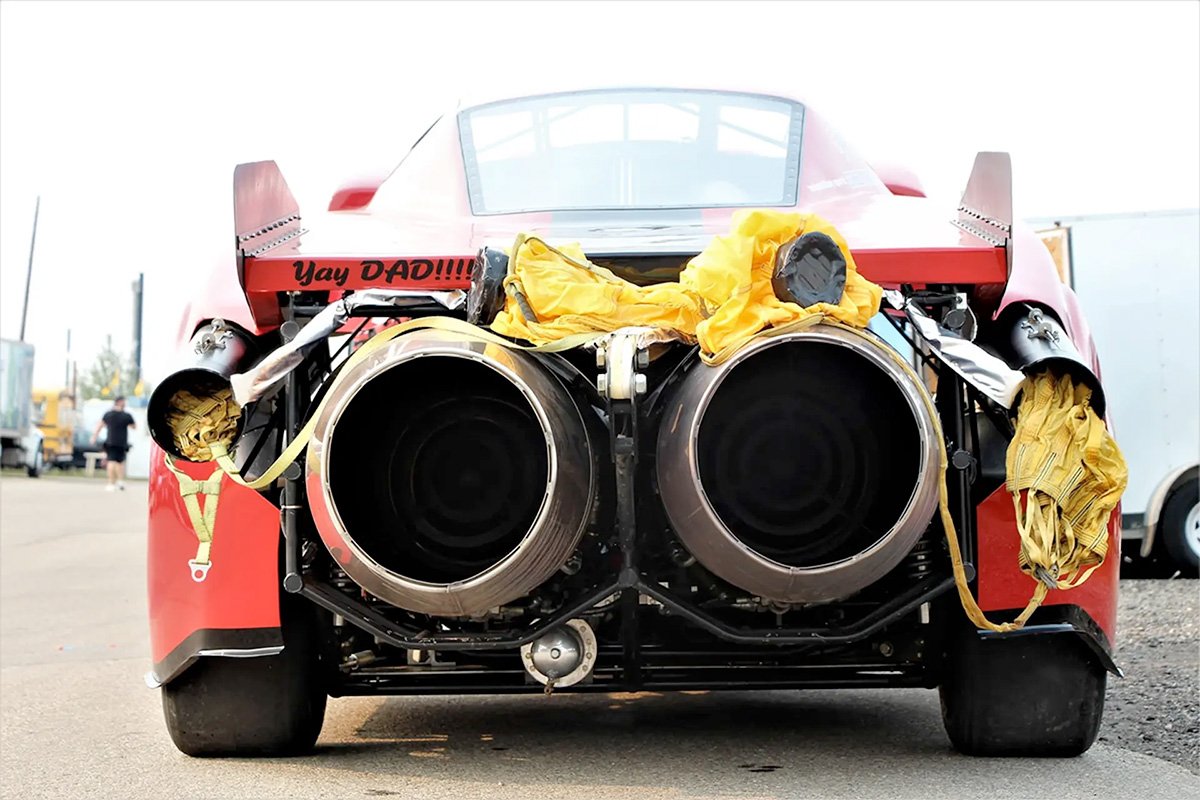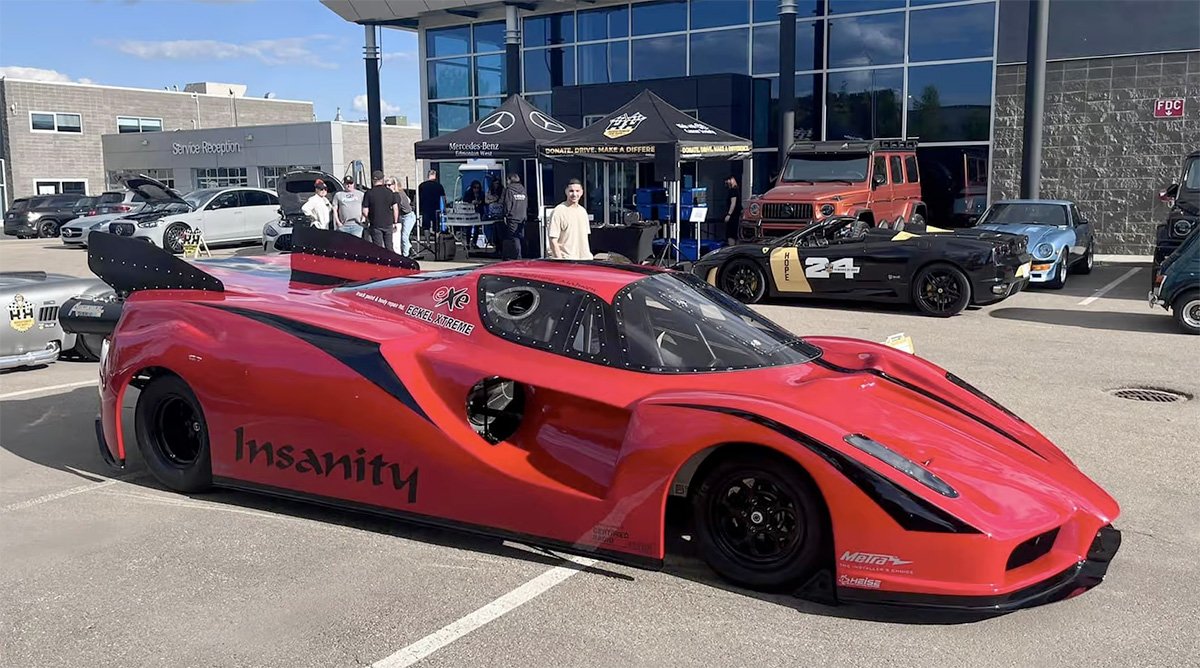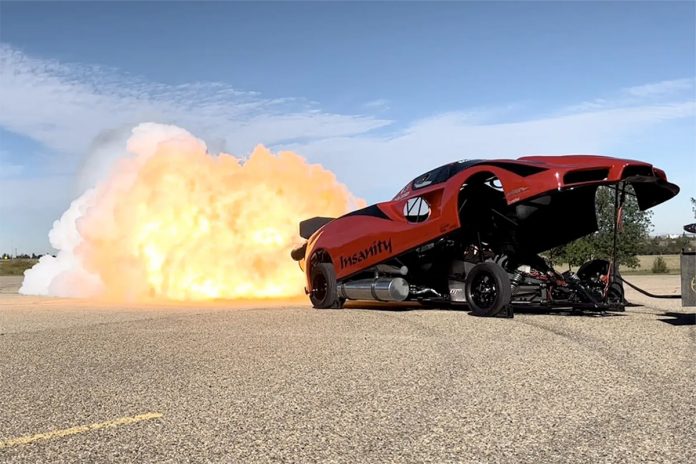Ryan McQueen, a Canadian auto enthusiast, has spent 17 years working on a mechanical wonder: the Insanity Jet Car. Powered by twin Rolls-Royce jet engines, this homemade dragster is designed to potentially reach speeds of 400 mph (643.7 km/h). McQueen’s passion for high-speed vehicles drove him to create this machine, which is a testament to his dedication and mechanical ingenuity.
The Insanity Jet Car, inspired by jet-powered Shockwave trucks that have amazed air show audiences by reaching speeds of up to 375 mph (over 600 km/h), is McQueen’s personal attempt to push the boundaries of automotive engineering. The fiberglass body, with a 130-inch (3,302-mm) wheelbase and a design reminiscent of the Ferrari Enzo, took McQueen five years to complete. The body is mounted on a custom-built chassis, and the car is powered by two Rolls-Royce Viper jet engines, which McQueen acquired from a friend.
These engines produce an incredible 18,000 horsepower (13,442.5 kW) and generate 14,000 pounds of thrust on the 3,800-pound (1,723.6-kg) dragster. According to McQueen, this power results in a force of 6 g under acceleration, and he estimates the vehicle could reach its 400 mph target. However, driving this machine comes with significant challenges, particularly in terms of safety, handling, and performance.
One major issue is fuel consumption. The Insanity Jet Car burns through 400 liters (105.6 gallons) of jet fuel in just two and a half minutes, making it impractical for anything other than short, high-speed bursts. Additionally, the intense speeds present unique difficulties, such as finding tires that can withstand the strain and maintaining control under the extreme g-forces produced during acceleration.

Although McQueen’s figures have not been officially verified, they align with what is known about similar jet-powered vehicles like the Shockwave trucks, so they are plausible. However, the project still requires further testing before McQueen’s goal of reaching 400 mph can be confirmed. The pandemic delayed his plans, but recent testing shows some promising results. In a video from July, McQueen claimed that the Insanity reached 134 mph (215.6 km/h) during an air show.

While the Insanity Jet Car has yet to hit its top speed, it remains an impressive feat of engineering, especially given that McQueen learned much of the necessary skills through YouTube tutorials. His journey with the Insanity is documented on social media, where fans can follow his progress as he continues to push the limits of his creation.

Source: Insanity Jet Car



